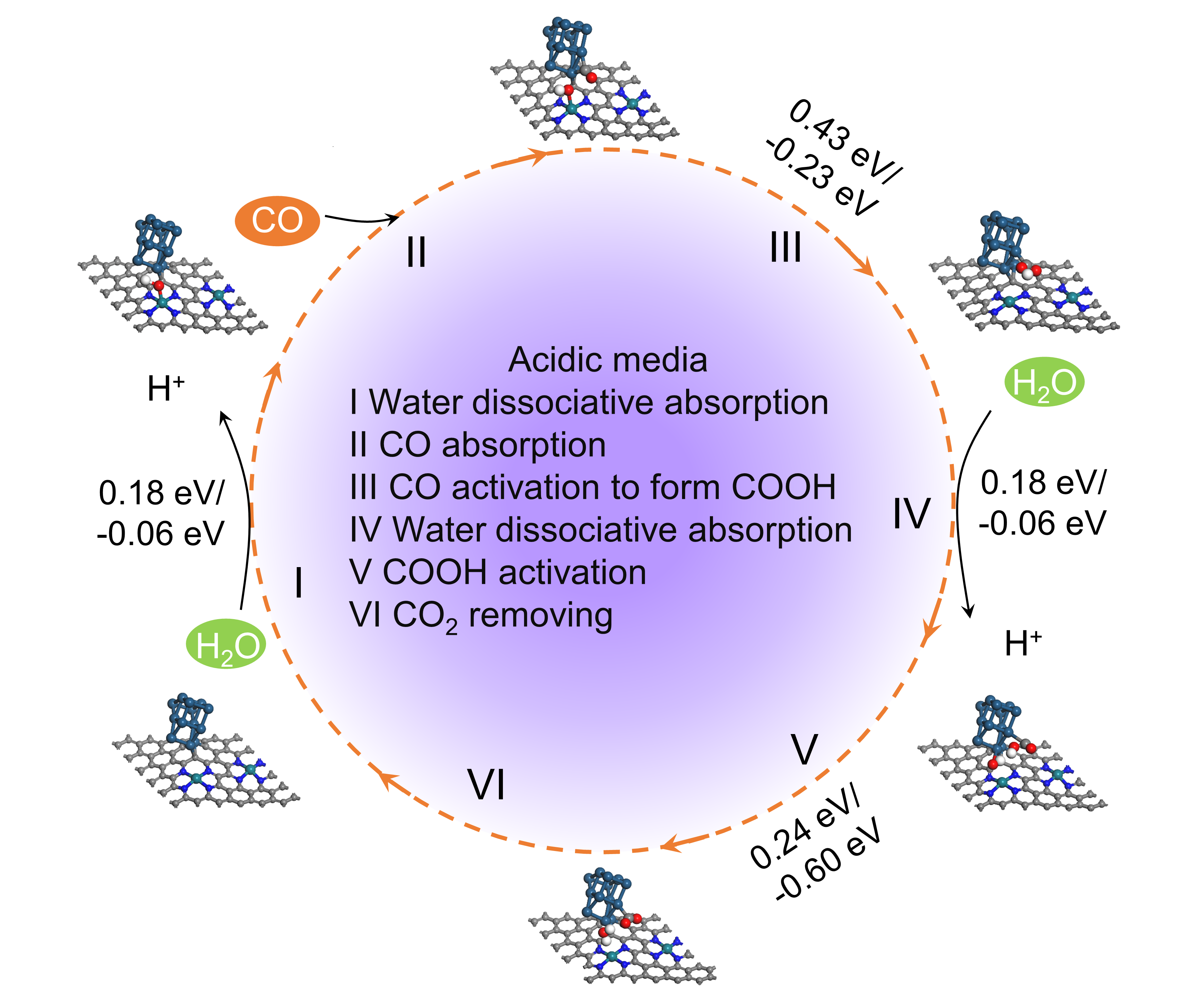
Proton-exchange-membrane fuel cells (PEMFCs) are highly sensitive to CO poisoning due to blockage of the current Pt based anode at operating condition. The allowance for use of cheap crude H2, which contains at least 1000 ppm CO, is a grand challenge facing the fuel cell community. Specifically, PtRu alloy were revealed to exhibit the best anti-poisoning behavior, with massive work carried out during the past several decades to further improve its anti-poisoning feature so as to meet the application demand. However, despite years of endeavor, the performance of PtRu based catalyst is still unsatisfactory, where a high catalyst loading (0.4 mgPGM cm-2) is necessitated to maintain the unfulfilling anti-poisoning behavior. Obviously, the acquisition of high-performance anti-poisoning catalysts is an aim being quite ambitious, where new ideas are desperately needed to achieve better results.
Herein, we use the single atom sites as CO scavenger to address the formidable CO poisoning issue. By bringing the Ir/Rh single atom sites to work synergistically with their metallic counterparts, the IrRh@CZIF-8 catalyst demonstrates not only excellent efficiency towards H2, but also high activity in CO electrooxidation and H2+CO. Therefore, unprecedented PEMFC performance using crude H2 as fuel is achieved when operating at ultralow noble metal loading. According to pre-poisoning experiment and surface enhanced Raman spectroscopy, we find that the single atom sites are not only fast CO oxidizing catalysts themselves, but also act as efficient CO scavenger for approximated metal particles, via supplying reactive OH* species. Overall, this work offers a proof-of-concept study to solve the long-lasting CO poisoning issue by bringing about a new catalyst design. We anticipate that this strategy may become the center for next generation anti-poisoning catalyst, and the CO poisoning issue of PEMFC may be thus eventually fully solved through further endeavors.